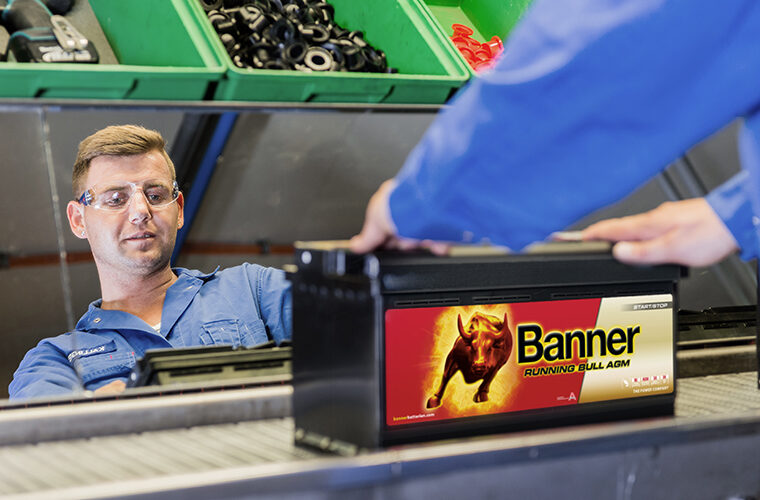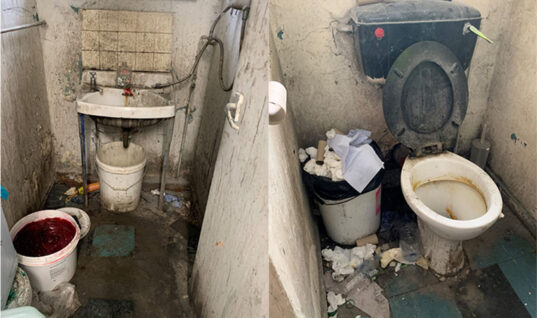Banner is a founding member of the Original Equipment Suppliers Aftermarket Association (OESAA). One of the key factors behind joining was the organisation’s determination and strategy to educate today’s and tomorrow’s industry professionals – and it achieved exactly that with regular participation at AutoInform and OESAA Academy Live.
In this final collaboration in the three-article series, Banner business development manager, Russell Shea, explores the rational reasons behind battery failure and why replacing it with a premium battery is vital, particular as temperatures plummet. This also represents opportunities for independent workshops and motor factors.
The causes of battery failure
Wear and tear
Battery wear and tear is a natural occurrence over time. Each cycle reduces a battery’s ability to supply current (CCA). Even in a discharged state, a battery in good condition can supply the specified levels of CCA when fully charged; however, a battery in poor condition will struggle to do so while still indicating a fully charged state.
Blowing hot and cold
Weather conditions play a significant role in battery performance. Cold weather affects battery plate aging and deterioration, reduces chemical reaction speeds, and increases starter motor power requirements.
Charging system efficiency is also reduced. In contrast, hot ambient and under-bonnet temperatures accelerate battery aging, plate corrosion, self-discharge rates, and electrolyte use.
Plate sulphation
A natural element of battery discharge, this process coats the battery’s plates in lead sulphate when it reaches 12.4V or below. Battery discharge leads to the accumulation of lead sulphate on the plates. If a battery is not quickly recharged, these deposits can crystallise and harden, reducing battery performance. Poor stock control, recharge procedures, and undercharging conditions contribute to plate sulphation.
Acid stratification and deep cycling
Acid stratification occurs when acid in the electrolyte solution concentrates at the bottom of battery cells. This is more common in cold months and results from undercharging and short driving periods. Deep discharging and rapid recharging, as seen in taxis and delivery vans, can lead to rapid performance loss and premature failure.
Overcharging and undercharging
Overcharging is caused by a malfunctioning charging system, leading to battery overheating and electrolyte evaporation. Undercharging, common in vehicles used for short journeys, results in slow plate sulphation, particularly when alternator voltage is low, the drive belt is loose, or cables exhibit high resistance.
Short circuits, dead cells and internal breaks
Short circuits and dead cells are typical within the first year of battery service. Short circuits can be identified through lower specific gravity (SG) and boiling during discharge tests. Internal breaks are detected by good SG readings but no open circuit voltage reading.
Does product quality matter?
Product quality is paramount when it comes to car batteries. If the battery is the heart of a vehicle, would you settle for anything less than the best? Premium OE brand batteries, like that from Banner, are known for their quality and durability.
When compared to private label products of the same size and specifications, premium batteries often stand out in terms of weight, indicating a higher lead content. Manufacturers can cut costs by reducing materials used in battery construction, resulting in smaller, thinner, and fewer plates, but this cost-cutting approach compromises the battery’s reliability, specification, performance, and overall lifespan.
In such batteries, power delivery is often achieved by increasing the acid concentration in the electrolyte. Unfortunately, this has a direct and detrimental impact on performance and longevity. A battery’s life cycle, divided into three phases – formatting, peak and decline – is compromised when plate numbers and lead content are reduced, and acid strength is increased.
Conclusion
Understanding the causes of car battery failures is essential for automotive aftermarket professionals. The winter season poses unique challenges to battery health.
By being proactive and addressing these issues, reiterating the importance of using a premium battery, we can help motorists keep their wheels turning and enjoy a reliable and problem-free driving experience.
This proactive approach not only benefits the customers but also creates profit opportunities for both technicians and motor factors.







